This simple aioli recipe will teach you how to make the perfectly rich, lemony, and garlicky French condiment by hand with just 5 ingredients and a vigorous whisk!
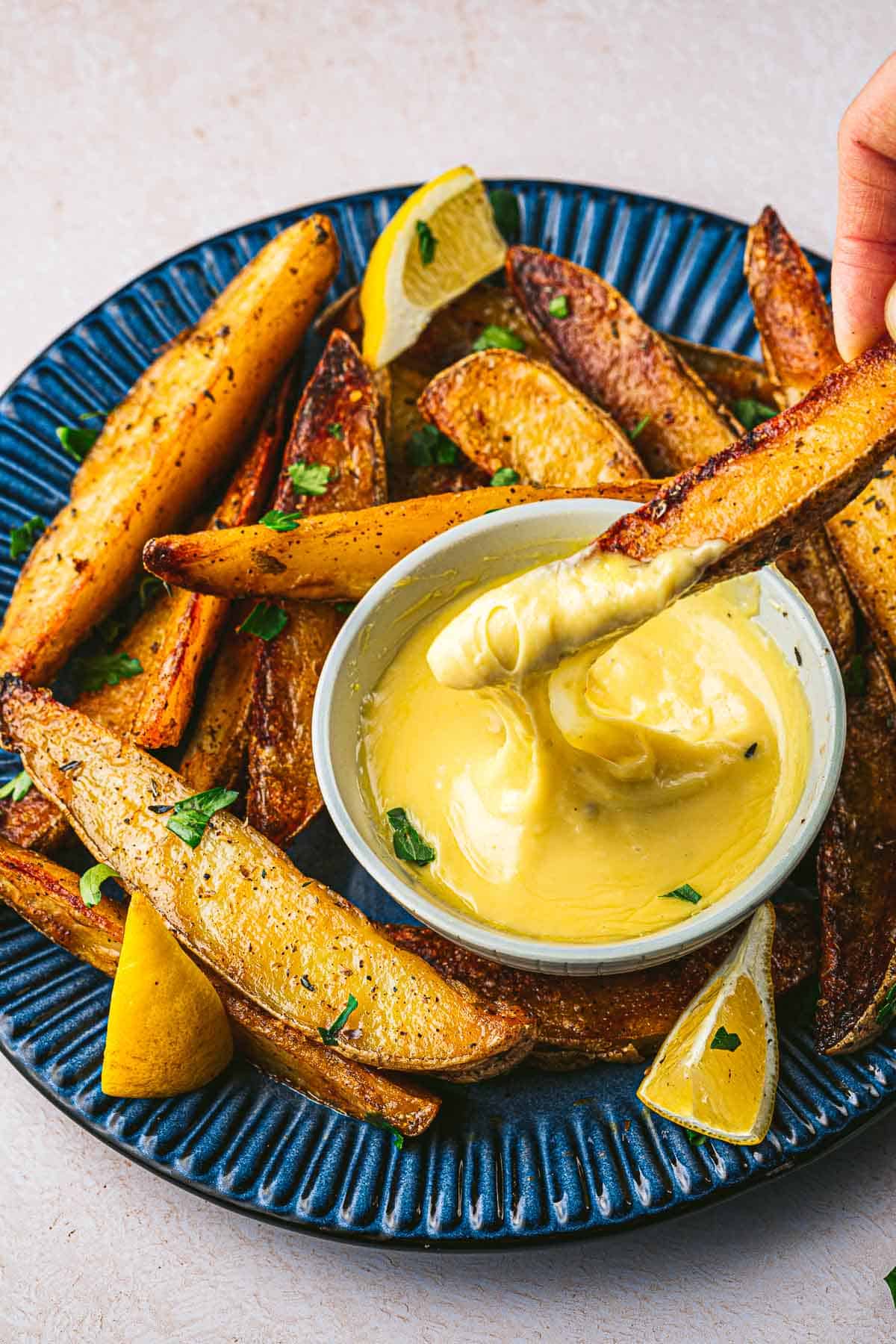
What is Aioli? Garlic Aioli vs Mayo
Aioli is a French condiment made by emulsifying egg yolk, garlic, and oil. It’s essentially mayonnaise but flavored with a bracing amount of fresh garlic. (Yes, “garlic aioli” is redundant, but it’s often how it’s often labeled, just like how we say “pita bread” or “shrimp scampi.”)
Hailing from the Provence region of Southern France, aioli is now beloved the world over. It’s commonly served as a dip with fresh or cooked vegetables crudité-style or stirred into soups and stews like Bourride, a Provencal fish stew. In the states, we often see “garlic aioli” on restaurant menus served alongside fries or slathered on a burger.
When used in moderation or to enhance other recipes, aioli offers a spectacular flavor boost. Use it to enliven everything from fresh vegetables and soups to sandwiches!
Why Homemade Aioli?
You could certainly make a “cheater’s aioli” by whisking lemon and garlic into store-bought mayo to save time. However, store-bought mayo is often made with low quality oils and preservatives.
Just like making your own salad dressing, homemade aioli means you can use a high quality extra virgin olive oil and seasonings. This makes a huge difference both in terms of flavor and texture. Plus, you just need a few pantry staples and a simple technique to make it!
Table of Contents
- What is Aioli? Garlic Aioli vs Mayo
- Why Homemade Aioli?
- What is in Aioli?
- How to Make Aioli
- Tips, Tricks, and Troubleshooting
- How to prevent garlic aioli from breaking
- How to fix broken aioli
- Can I make aioli in a blender or food processor?
- Ways to Mix it Up
- What to Serve with Aioli
- More Bold and Creamy Mediterranean Dips
- Garlic Aioli Recipe
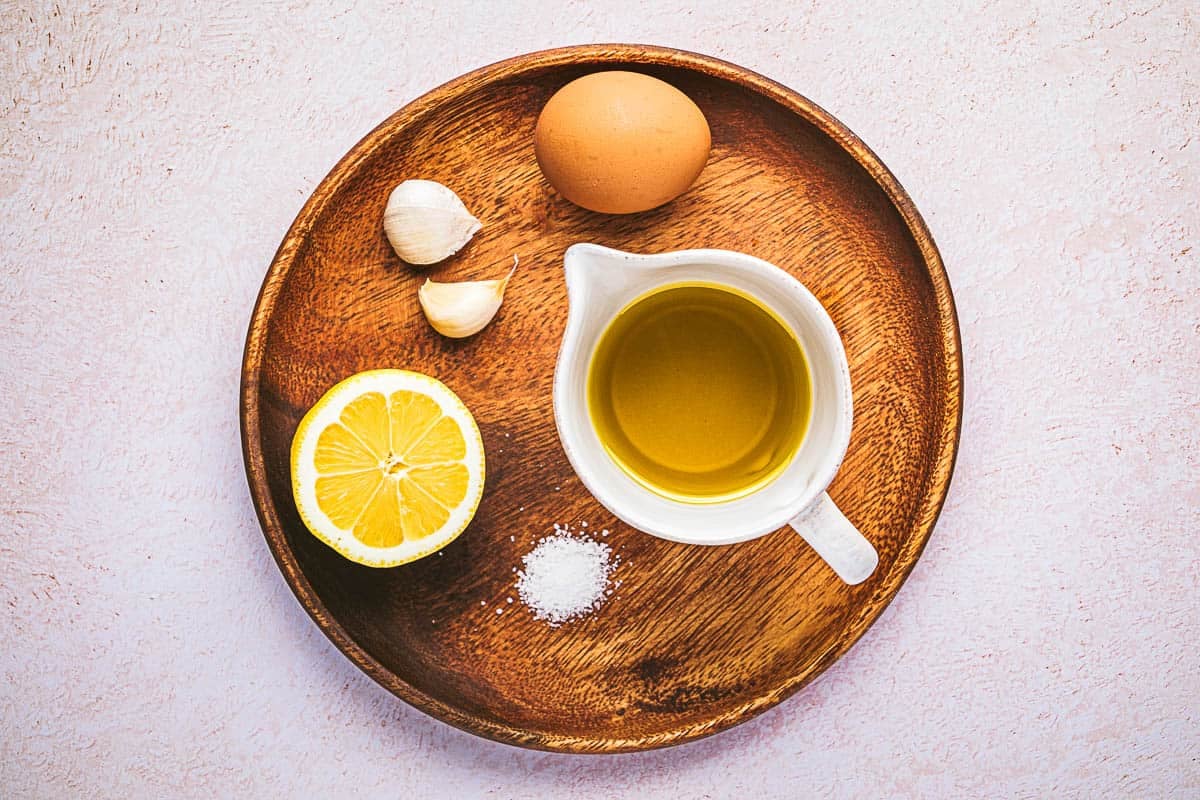
What is in Aioli?
Aioli dates back hundreds of years, with traditional recipes sometimes including boiled potato or even breadcrumbs in place of the egg yolk. But to make a modern-day aioli, you just need 5 basic ingredients:
- Garlic: Garlic is the main event here, and what distinguishes aioli from mayo.
- Egg yolk: An egg yolk gives aioli its thick, creamy richness. For an eggless version of aioli, try Toum.
- Extra virgin olive oil: A nutritious and flavorful alternative to neutral oil, which is often used in aioli recipes. I recommend a high-quality Italian olive oil like our Nocellara. Its mild, buttery taste and low bitterness won’t overpower the other ingredients.
- Lemon juice: A touch of acidity balances the richness of the egg and the oil.
- Kosher salt: Known for its large crystals and clean taste, kosher salt is my go-to seasoning. If your aioli tastes “flat” or “dull,” try adding a pinch more salt.
How to Make Aioli
Making aioli takes some patience–and sometimes practice–to get a nice emulsion between the oil and egg yolk. Go slowly, whisk constantly with a wire whisk (not silicone, which will be too gentle), and follow these easy steps (be sure to check out the tips and tricks below too!):
- Get ready: Shape a damp kitchen towel into a ring on your counter. Nestle a medium mixing bowl in the center. This will keep the bowl steady on the counter as you use both of your hands to assemble the aioli. Measure out 1/2 cup extra-virgin olive oil into a glass measuring cup with a spout and set aside.
- Season the egg yolk: Into the bowl, add 1 large egg yolk (save the egg white for frittata or toasted lemon meringue). Season with 1/4 teaspoon of kosher salt. Use a microplane or the small side of a box grater to grate 2 garlic cloves into the bowl.
- Emulsify: Whisk the egg yolk mixture briefly to combine. Add olive oil a few drops at a time while whisking continuously. As the aioli begins to emulsify into the egg yolk, increase the oil to a steady, but very thin, stream as you whisk continuously. Going slow here is key to prevent the emulsion from breaking.
- Add the lemon juice: When all of the oil has been added, whisk to fully incorporate. Add 1 teaspoon of fresh lemon juice and whisk briskly to combine. Taste and add more salt and lemon juice, according to your preference.
Tips, Tricks, and Troubleshooting
The most common pitfall people face is that the aioli “breaks,” meaning the oil and the egg yolk don’t emulsify and the aioli never thickens. Here are some tips and tricks to prevent, and fix, a broken aioli.
How to prevent garlic aioli from breaking
- Slow down: Add the oil very slowly, especially to start. Begin with just a drop or two of oil at a time. Once it starts to take shape, gradually increase to a very thin stream.
- Temperature: If it’s especially warm in your kitchen, place your tools and ingredients in the fridge for a half hour before getting started. Contrary to popular opinion, I find a cold yolk and oil helps with emulsification. I spent a summer in a busy cafe kitchen, where we made buckets of aioli for BLTs. The kitchen was so hot I struggled to keep my aioli from breaking, much to my extreme frustration! Eventually, we discovered it helps to keep everything very cold (including, sometimes, the food processor!).
How to fix broken aioli
- Option 1: Start over. Take a deep breath, try again, and add the oil more slowly the second time around. Make sure to use a wire whisk and whisk like your life depends on it!
- Option 2: Try adding another egg yolk. This can sometimes fix a broken aioli, but not always. If this doesn’t work, try whisking in a teaspoon of ice water. (This does not always work. If you’ll be devastated by another wasted yolk, it may be a better option to start over.)
Can I make aioli in a blender or food processor?
Yes, but with one very important modification. If you’re using a machine to make your aioli, I do not recommend using extra virgin olive oil. Instead, look for olive oil labeled “refined” or “for cooking.” When extra virgin olive oil is beaten at high speeds, the blades disperse the polyphenols normally coated by fatty acids. This can make their bitter flavor more prominent.

Ways to Mix it Up
Think of this aioli recipe as a starting point–a blank canvass for so many flavors! Some ideas:
- Extra garlicky aioli: This aioli recipe is mild by traditional standards. Add as many as 6 cloves of garlic to really up that spicy kick.
- Roasted garlic aioli: Make a paste out of 1 whole head of roasted garlic, then whisk it into the egg along with 1/2 teaspoon of Dijon mustard.
- Green goddess aioli: Blend 1/2 avocado with 1/2 cup Greek yogurt, a few sprigs of fresh tarragon, chives, and parsley until bright green and smooth. Stir into the aioli and add more lemon juice to taste.
- Smoky red pepper aioli: Blend 1 roasted red pepper with 1/2 teaspoon of smoked paprika until smooth. Stir into the aioli and add salt to taste. This is great for dipping our Patatas Bravas into!
- Herby Aioli: Add 3 tablespoons of basil pesto or zhoug (spicy cilantro pesto) for an herbaceous kick.
- Spicy Aioli: Add 1-2 tablespoons Tunisian harissa paste.
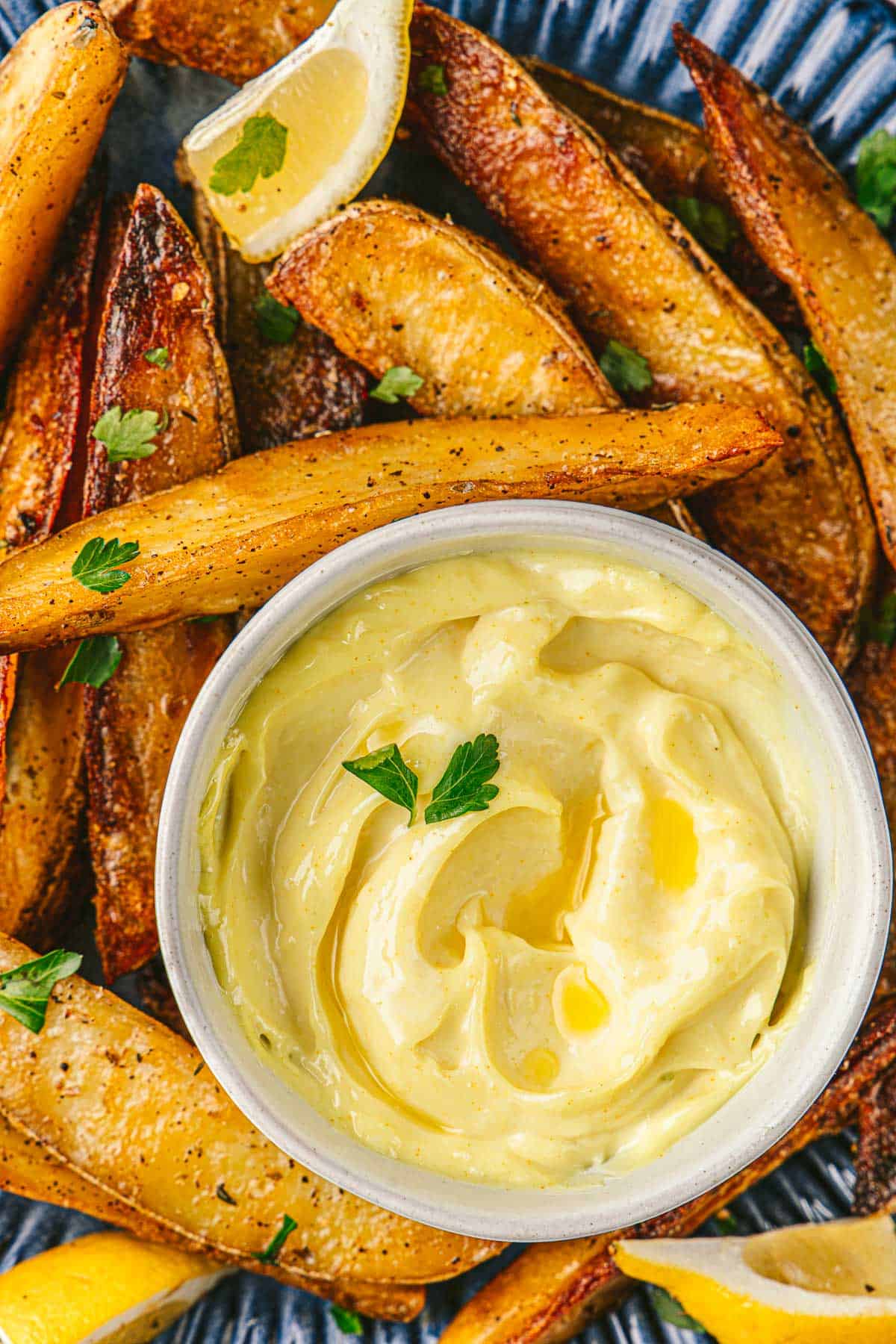
What to Serve with Aioli
The traditional Le Grand Aioli in Provencal cuisine is a delicious summer meal for a crowd. Simply whisk up a batch of handmade aioli and lay out a spread of seasonal vegetables. Try with crisp leaves of lettuce, boiled potatoes, blanched green beans, sliced cucumbers, cherry tomatoes and fresh or roasted radishes for dipping.
Don’t stop there! Add Shrimp Skewers, broiled lobster tail, and jammy boiled eggs to your platter. Be sure to have lots of cold rosé on-hand to wash down this feast!
More Bold and Creamy Mediterranean Dips
Dips and Condiments
Tonnato—The Italian Tuna and Caper Sauce You’ll Want on Everything
Dips and Condiments
Turkish Tarator Sauce (Creamy Walnut Spread)
Browse all Mediterranean recipes.
Visit Our Shop.
Nocellara Olive Oil
Make this Aioli with extra smooth Italian extra virgin olive oil from 100% Nocellara del Belice olives.
Garlic Aioli

Ingredients
- 2 cloves garlic, peeled
- 1/4 teaspoon kosher salt
- 1 egg yolk
- 1/2 cup extra virgin olive oil
- 1 teaspoon fresh lemon juice
Instructions
- Get ready: Wet a kitchen towel and wring out until just damp. Shape the towel into a ring on the counter and nestle a medium bowl in the center. Place the oil in a measuring cup with a spout and set aside.
- Season the egg yolk: Using a microplane or the smallest side of a box grater, finely grate the garlic into the bowl. Add the kosher salt and egg yolk. Whisk briefly combine.
- Add the oil: Whisk the egg yolk mixture briefly to combine. Add olive oil a few drops at a time while whisking continuously. As the aioli begins to emulsify into the egg yolk, increase the oil to a steady, but very thin, stream as you whisk continuously. Going slow here is key to prevent the emulsion from breaking.
- Finish the aioli: Once all oil has been added, whisk a few more times to ensure that the mixture is thoroughly emulsified. Whisk in lemon juice. Taste for salt and adjust accordingly.
Video
Notes
- Shop this recipe: Visit our shop to browse quality Mediterranean ingredients including the olive oil used in this recipe.
- Aioli, kept in a tightly sealed container, will keep for up to one week in the fridge.
-
How to fix broken aioli
- Option 1: Start over. Take a deep breath, try again, and add the oil more slowly the second time around. Make sure to use a wire whisk and whisk like your life depends on it!
- Option 2: Try adding another egg yolk. This can sometimes fix a broken aioli, but ot always. If this doesn’t work, try whisking in a teaspoon of ice water. (This does not always work. If you’ll be devastated by another wasted yolk, it may be a better option to start over.)
Nutrition
*This post has recently been updated with new information for readers’ benefit.

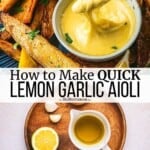

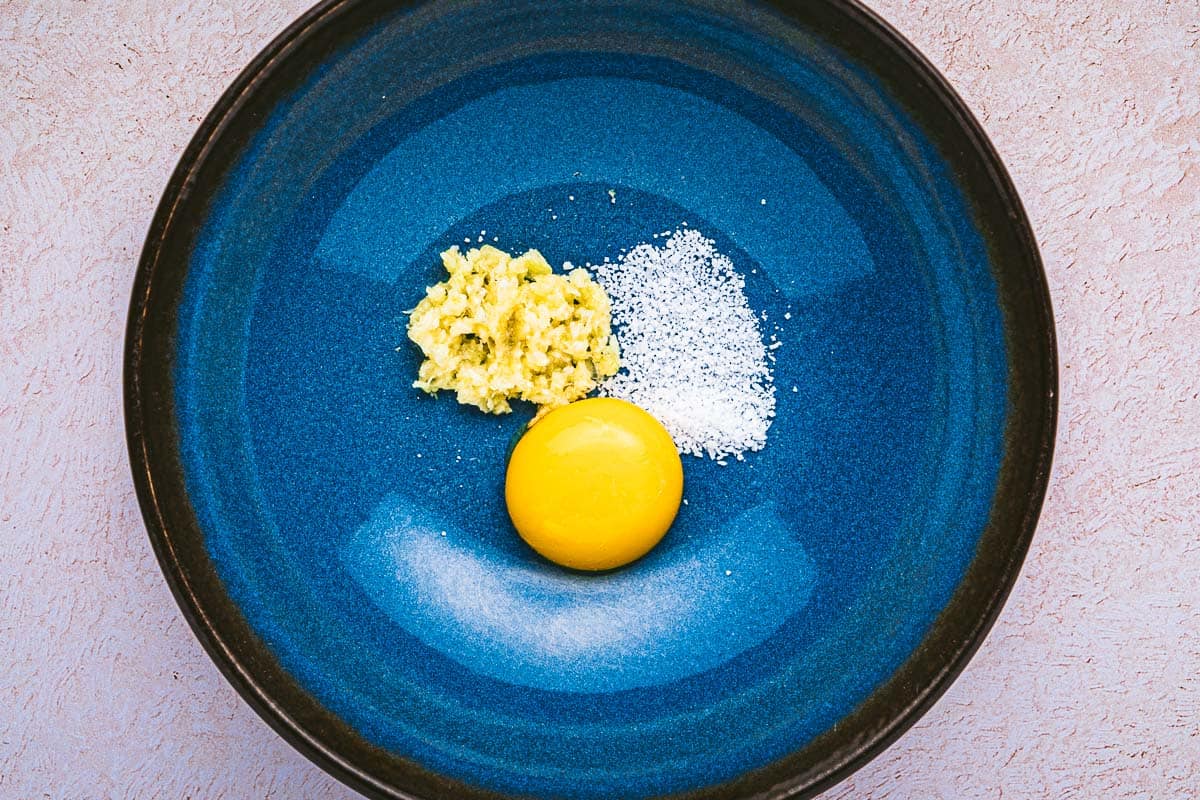
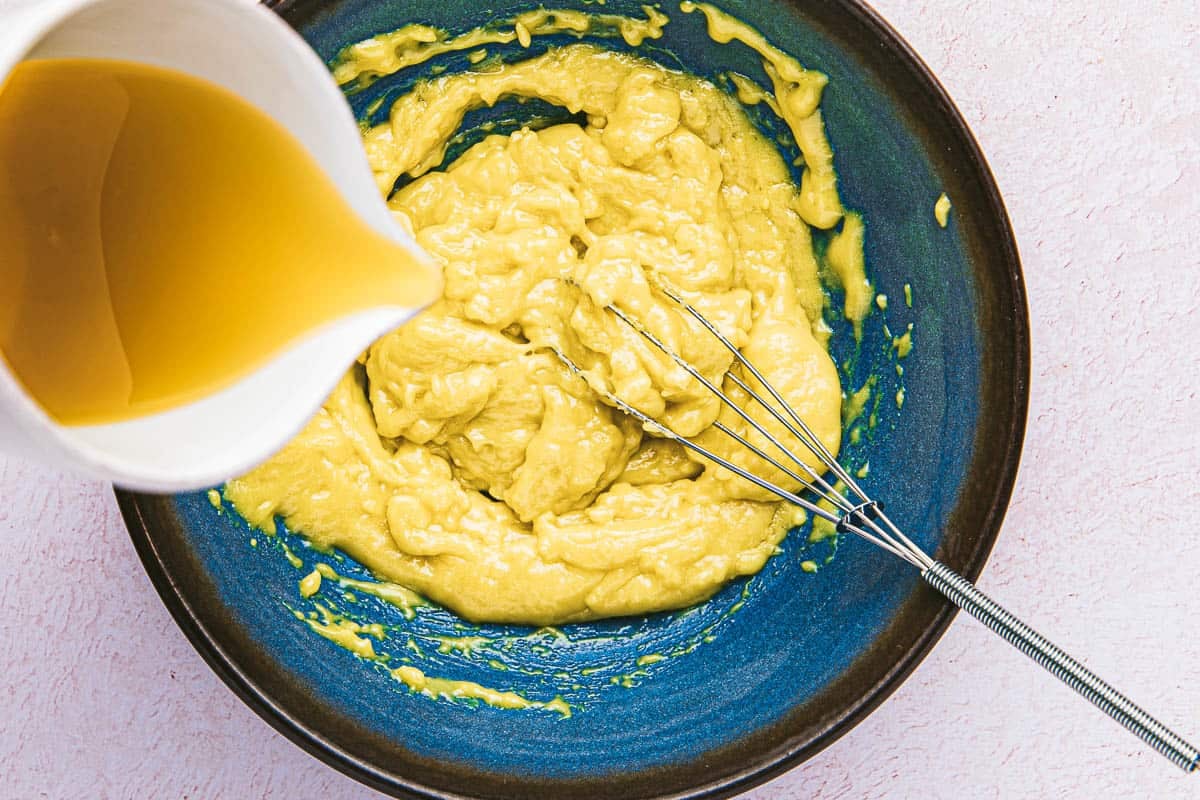
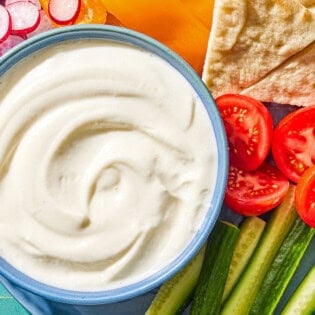
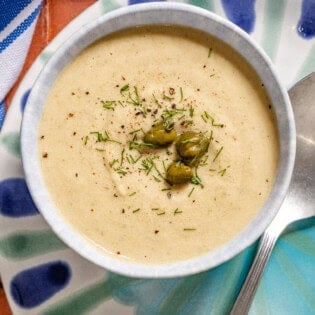
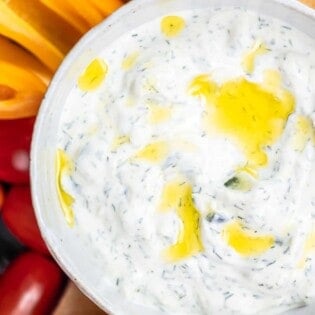
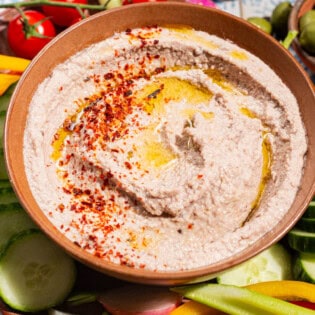
Perfect
Since you have put effort into making this somewhat of an informational post, it would be worthwhile for you to note that traditional aioli does not in fact contain egg, it is just and emulsion of garlic and oil, with a little bit of lemon juice and seasoning. It is a difficult emulsion to make and splits easily, so doing it with an egg yolk makes it easier. But then you really have made a garlic mayo, not a true aioli.
I never make any comments on any websites, but I have to make an exception here. This is the best aioli recipe that I tried! For the longest time I had a craving for aioli, and I finally managed to find a recipe that is easy to follow, and tastes ABSOLUTELY DELICIOUS!! Thank you for posting this recipe including the tips on how to save it if it gets too grainy. In the whole process I had to add a few spoons of cold water, but it really worked. I am adding this site to my favourites!
This is so great to hear! Thank you!
Admittedly, I did not make this recipe as I prefer not to consume raw eggs. I have a simple recipe that will not break and is creamy and delicious. I believe I came up with his recipe. However, influences can be forgotten. I use the acronym LOHF as the basic structure for the recipe. It is a basic mixture of lemon juice, olive oil, and feta cheese With some honey, added to taste. The proportions can be modified to suit. Individual tastes the addition of garlic, maybe in which case I would omit the honey.
In eastern Spain, this is called alioli. They serve it on on sliced, toasted bread as an appetizer. It is delicious, but I’ve never been successful making it. Best wishes!
I made this recipe, I think it needs a little less olive oil, I also add a pinch of dried mustard, and I did end up squeezing more lemon..
just tastes like oil. unbalanced
Great recipe. My first time making aioli and it was a huge success. Thank you for the recipe!
Yay! 🙂
What would I substitute for the egg yolk to make this recipe vegan? Looking forward to making!!
Hi, Elaine. We haven’t every tried this recipe with a substitute for the egg, so I’m not sure what may work. We have a great Toum recipe though, which is a garlicky condiment that similar to aioli, only without the egg.
What’s the reason for the towel?
Hi, Mia. This will keep the bowl steady on the counter as you use both of your hands to assemble the aioli.
Love your recipes, thank you!
Curious. How is this recipe, that contains an egg yolk, considered dairy free?
Hi! Eggs are not dairy. Dairy is animal milk or products that contain milk like cheese or yogurt.
That’s awesome. I could never make aioli or homemade mayo, they always curdle! I’ll give this a try but I’m scared!
I say go for it! 🙂
Just made it, I think, maybe alittle less olive oil, but it needs the lemon…